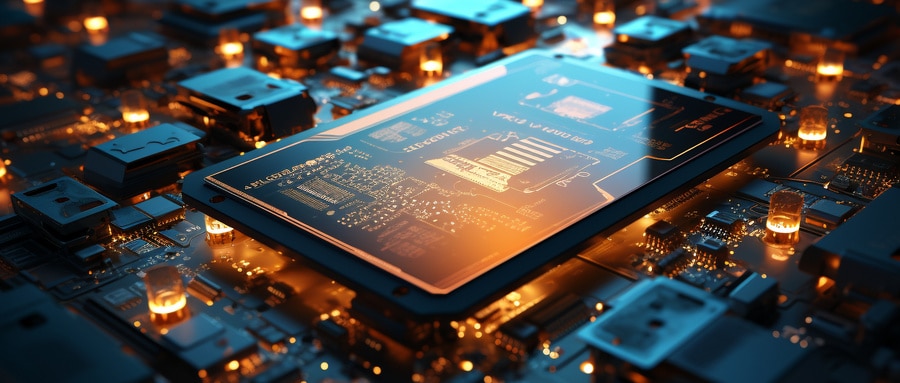PCB Circuit Board Materials Matters: An In-depth Examination of PCB
At PCB (Printed Circuit Board) design and manufacturing facilities, substrate material selection plays a vital role in determining board performance, durability and application. From traditional materials like FR-4 to advanced Ceramic PCBs – this article explores various options and their impacts.
1.PCB Circuit Board Material: FR-4
Fiberglass Reinforced Epoxy Laminates, more commonly referred to as FR-4, are the go-to substrate material for PCB manufacturing applications due to its ease of production, good thermal properties and competitive pricing. FR-4 provides outstanding general application performance making it the go-to choice in consumer electronics manufacturing applications.
2.PCB Circuit Board Material: Aluminum
Aluminum-backed PCBs, known as metal core PCBs (MCPCB), are popular choices when heat dissipation is key to an application’s performance and reliability. LED PCBs, power converters and automotive systems often rely on aluminum to enhance reliability and longevity.
3.PCB Circuit Board Material: Polyimide
Designers seeking high-temperature resistance and mechanical stability often opt for Polyimide as it has excellent thermal endurance properties that make it suitable for aerospace and military applications. While more costly than FR-4, Polyimide makes for excellent use in military or aerospace settings.
4.PCB Circuit Board Material: PTFE (Teflon)
When it comes to high-frequency applications such as microwave, RF and antenna use, Teflon is often the go-to material due to its low dielectric constant and superior chemical resistance – making it the go-to material in such circumstances.
5.PCB Circuit Board Material: Ceramic
While not yet commonplace, ceramic PCBs have increasingly gained favor for high frequency and temperature applications, offering superior thermal conductance, electrical insulation, mechanical strength and cost.
6.PCB Circuit Board Material: Rogers Material
Rogers material is another high-frequency application substrate with excellent dielectric constant and moisture tolerance characteristics that makes it suitable for wireless communications and complex multilayer designs.

PCB Circuit Board Material: Conclusion
Selecting the material used for PCB boards can have an enormous effect on their thermal, mechanical, and electrical properties. Therefore it’s crucial to select one that satisfies device-specific application, environment, and performance requirements. As our understanding of materials improves and more substances become available it will be fascinating to witness how advances will shape future PCB designs and applications.
FAQ:
- What is a PCB made of?
A typical PCB is composed of multiple layers which include a substrate material (usually FR4), a layer of copper, solder mask layer, and finally a silkscreen layer. - What is FR4 material?
FR4 is the commonly used substrate in PCBs. It is a type of glass-reinforced epoxy laminate material that is fire resistant, hence the name FR (Fire Retardant). - What role does copper play in a PCB?
Copper is typically used as the conductive layer in a PCB to create traces or paths for electrical flow. It’s chosen due to its excellent electrical conductivity. - What materials are used to make the solder mask?
Solder mask is a layer of material (typically a polymer) applied to the copper layer of the PCB to prevent undesired solder bridges from forming between closely spaced solder pads. - What is a silkscreen layer?
The silkscreen on a PCB typically contains printed information that assists in assembly, verification, and troubleshooting, including component designators, switch settings, test points, and other indications. - What are RoHS-Compliant PCBs?
RoHS-compliant PCBs are printed circuit boards that satisfy the standards set forth by the Restriction of Hazardous Substances (RoHS) directive. These standards restrict the use of certain substances in electronic products, including lead. - What is a metal core PCB?
In a metal core PCB, the base material for the PCB is a metal core, typically aluminum, to help with heat dissipation. These PCBs are used in LED technology, power converters, and other high power, high heat applications. - What is High Frequency (RF) PCB Material?
High Frequency PCBs use materials like Rogers or Teflon for designs that operate on high frequency and microwave circuits, where normal FR4 material does not provide the performance needed. - What are flexible PCBs made of?
Flexible PCBs need materials that can flex without breaking. Polyimide is a common material used for these applications – it’s resistant to heat and flexible, allowing the circuit to bend. - Can I have gold on my PCB?
Yes, gold is sometimes used in PCBs for its high conductivity and resistance to oxidation. Gold is commonly found in high-speed signal PCBs, and sometimes in the connectors and fingers along the edge of the PCB.























